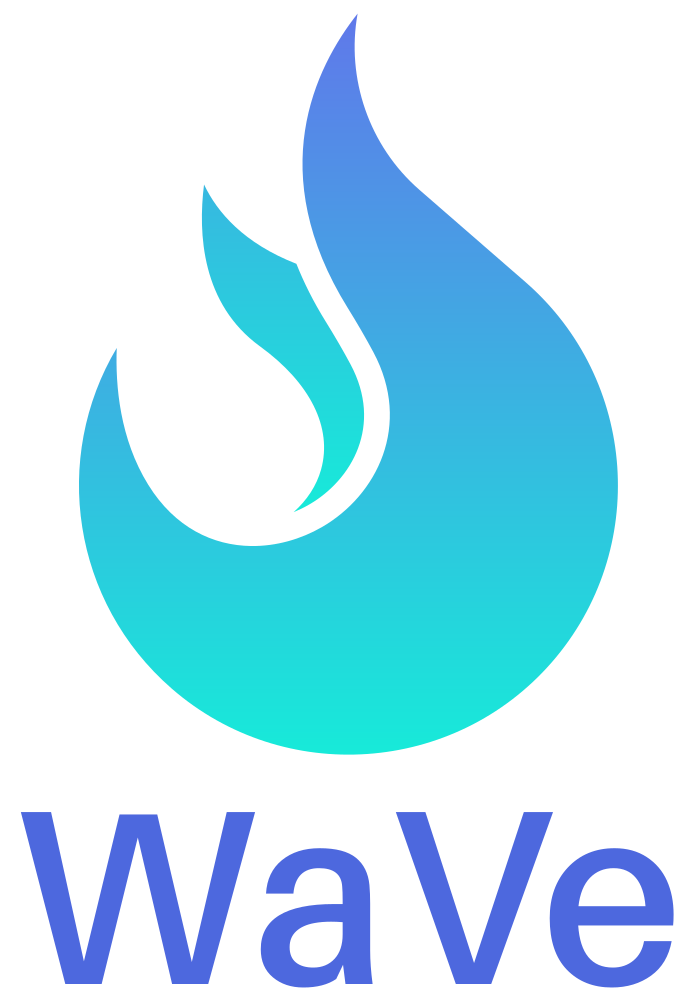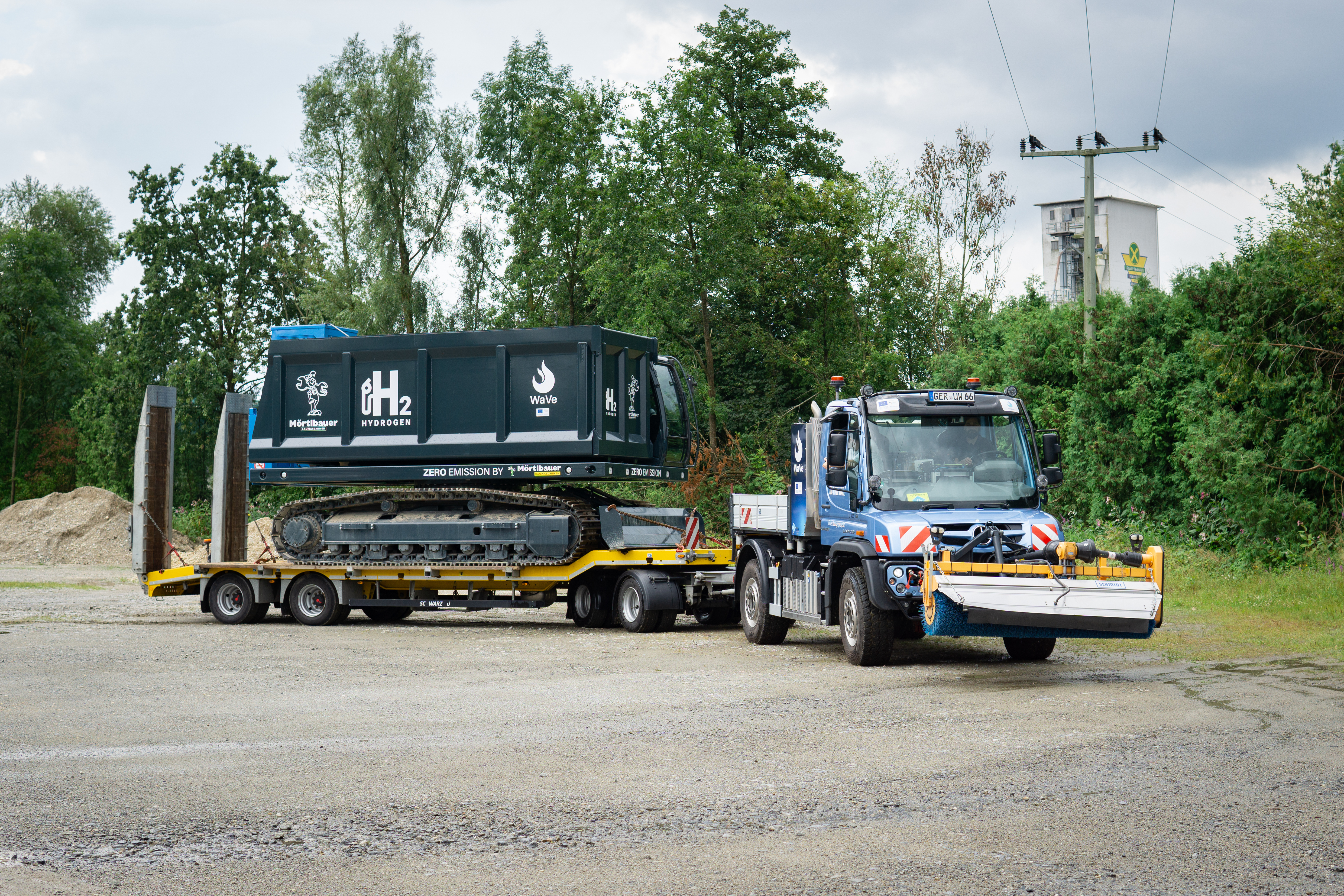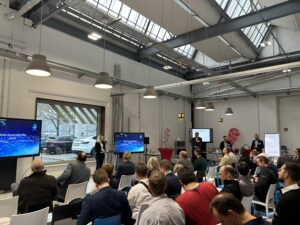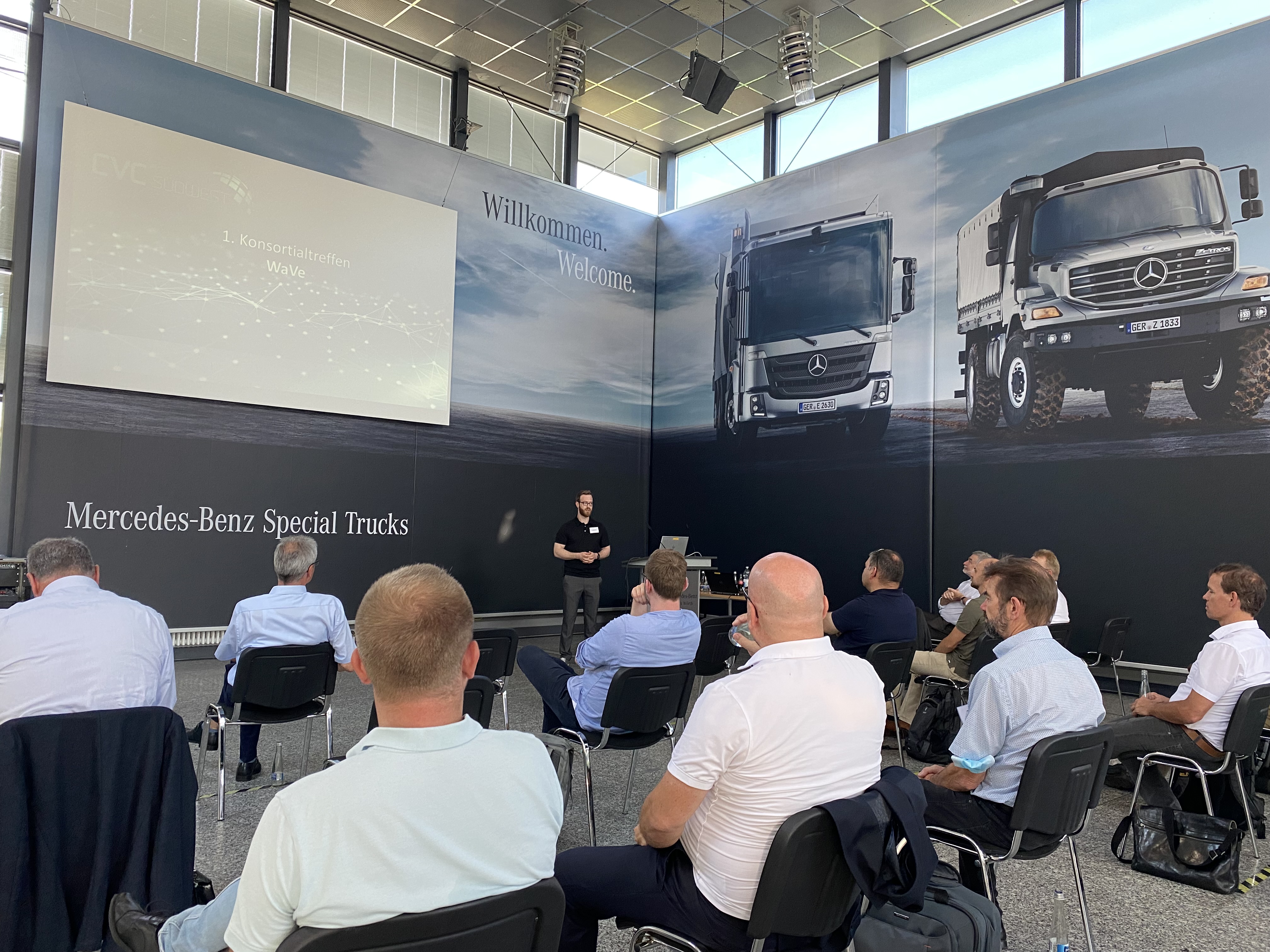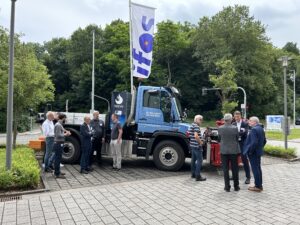After a three-year run, the »WaVe« project ended successfully with two hydrogen demonstrators on June 30, 2024.
One last time the consortium gathered for the final meeting on June 20 at the Institut für Oberflächen- und Schichttechnik (IFOS GmbH) in Kaiserslautern.
Host: Institut für Oberflächen- und Schichttechnik
Prof. Johannes L’huillier of the Institut für Oberflächen- und Schichttechnik GmbH (IFOS) started the event by presenting the institute’s research activities. As an analyst provider, the institute supports its clients in research and economy with their individual problems of material, product, and process development. It also provides failure and damage analyses, as well as solution approaches to contaminations, coatings, and discoloration. Meanwhile, the processing of samples usually takes only 10 days after receipt.
Optimizing the air pathway and after-treatment of exhaust gases
Martin Weber (IAV GmbH Ingenieurgesellschaft Auto und Verkehr) presented the results of the optimization of the air pathway and after-treatment of exhaust gases of the medium-duty hydrogen motor. In order to estimate the potential of the low-pressure DI hydrogen combustion a 1D-model was built in a software environment. First, the two injection systems (LP-DI and PFI) were compared with a constant air-fuel ratio, identical hardware, and the same torque requirement. Compared to the DI model, the PFI model presented an increased efficiency. Subsequently, a comparison with optimized turbocharger sizes was made. While both injection systems were able to achieve low NOx emissions, the DI concept was particularly convincing at low engine speeds. The study confirmed the possibility of reducing emissions of H2 engines to zero-impact levels by using proven technologies such as SCR.
Near the end of the joint project, cooperating IAV and Daimler Truck measured the emissions by the physical H2-UNIMOG via PEMS (Portable Emissions Measurement System). The goal of the measurement was to compare a reference vehicle (Diesel engine) with the first WaVe prototype. Both vehicles were measured while driving and mowing. In the first measurement campaign interactions between the generator and the supplied hydrogen analyzer led to erroneous measurement. After the optimization of the measurement setup and the WaVe prototype, the tests were successfully repeated.
In addition to NOx and THC, the WaVe-UNIMOG’s hydrogen emissions were monitored. Erroneous measurements cost by acceleration or strong movements highlighted the lack of suitability of the utilized H2-measurement equipment in mobile operations and the demand for a mobile H2-analyzer on the market. Nevertheless, the feasible measurements showed that the combustion engine emits almost no unburned hydrogen. Since no carbon is involved in the combustion process of the H2-UNIMOG, the engine doesn’t emit any in general. However, the PEMS measurement also detects the carbon generally contained in the intake air. After adjusting the results, regarding the carbon concentration caused by the ambient air, the WaVe-engine emission values were well below the legal limits of EU 2019/1242.
Optimization of hydrogen injection
Kristina Vetter and Tobias Gawlica presented insights on the influence of the hydrogen injector position in the engine. Referring to a measuring series the team of Robert Bosch GmbH demonstrated hydrogen injections close to the admission valve enable the best results regarding combustion anomalies like backfire and pre-ignition. Additionally this way the best full-load values can be achieved.
Also, the team of the chair of Antriebe in der Fahrzeugtechnik (LAF – RPTU) dealt with the question of the influence of the injector position. To ensure safe engine operations operating parameters were gradually optimized at the test bench. While robust engine operations free of combustion anomalies could be achieved in the speed range up to 1400 min-1, knocking events that increasingly occurred at operating points at higher speeds limited the maximum engine torque that could be reached. The anomalies could be attributed to an uneven distribution of hydrogen (partly due to the intake manifold geometry) and the resulting different mixture compositions in the individual engine cylinders. The influence is also evident in the distinct difference in the respective cylinder pressure curves. To address the issue an S-shaped gas guiding pipe was developed. Optimizing the process, the adaption prevents unwanted water to accumulate in the suction tube, improves the mixture of water and air in the cylinder, and reduces the negative influence of the suction process on the equal distribution of hydrogen. As a result, in some cases, a reduction in nitrogen oxide emissions of more than 50 % compared to the original design was achieved.
Analysis of engine components
Niklas Berger and Swen Ehnert presented the final results of IFOS GmbH’s engine components analysis. In order to be able to make statements about possible H2 embrittlement and its negative influence on material properties, a quantitative hydrogen analysis via SNMS (secondary neutral particle mass spectrometry) was carried out. Perforated caps from IAV GmbH were inspected for defects and hydrogen exposure after their use. The samples neither displayed a significant difference in the hydrogen-iron-ratio, nor any noticeable defects. Furthermore, valve discs by FEV Europe GmbH have been analyzed for defects and embrittlement. No significant defects were detected. However, concentrations of various foreign elements were identified. The comparison with an H2-piston of the RPTU’s test bench confirmed the theory that elements of lubricants and additives had been transferred to the combustion chamber. Additionally revealed the analysis of used spark plugs anomalies. The identified corrosion is being further analyzed, since it might have led to the observed spark failures and problems with spark-overs.
Tracked Vehicle „MULY“
In the final presentation of the joint project Armin Mörtlbauer (Mörtlbauer Baumaschinen Vertriebs GmbH) presented the realization of the hydrogen-based tracked vehicle MULY and the regulatory challenges of procurement and start-up of a mobile hydrogen filling station. As a multi-functional equipment carrier, a such vehicle allows the individual transport of logs, bulk materials, a container, or a pug mill. In »WaVe« MULY was equipped with a skip to transport bulk materials. The power to drive the hydraulic work functions is provided by the hydrogen engine previously installed in the UNIMOG demonstrator. The arrangement of the drive components behind the cab enables easily accessible maintenance. To ensure an interchangeable tank system in the future, the H2 tank was installed separately from the other components at the rear of the machine. The mobile hydrogen filling station was solely acquired for the joint project and required various bureaucratic obstacles and safety precautions including a fenced-off area.
During the driving tests at medium to high speeds, a range of approximately 1.5-2 operating hours was achieved. It takes around 20-30 minutes to fully refuel the machine with the mobile hydrogen filling station. For construction sites that are difficult to access and can only be reached with light, off-road vehicles, the use of interchangeable tank systems appears to be the most economical solution.
Outlook
Following the consortium meeting, both prototypes met at the premises of Mörtlbauer Baumaschinenvertriebs GmbH in Fürstenzell to once again demonstrate their functionality. At the concluding event, the UNIMOG transported the tracked demonstrator on the low-loader, MULY drove on its tracks, and representatives of Mörtlbauer Baumaschinenvertriebs GmbH demonstrated the process of hydrogen refueling at the company’s mobile filling station.
Franziska Cusumano, Head of Mercedes-Benz Special Trucks:
„The event with and at our partner Mörtlbauer demonstrated once more that both vehicles are at a stage of development with which we can be more than satisfied after a project duration of just three years. After numerous test runs, exhaust gas measurements, and technical fine-tuning, we are convinced that hydrogen combustion is reasonable, practical, and very low-emission for work machines with high power demand for driving and for sustaining the power take-off.”1
After the conclusion of the joint project the UNIMOG prototype of »WaVe« was honored with the ETM-Award of BEST OF NEW TRANSPORTATION – Concept Truck at the IAA-Transportation 2024.
The joint project »WaVe« demonstrated that hydrogen engines in the Medium-Duty area are technically, economically, and ecologically reasonable and possible. However, further research and development are required before a cost-efficient and efficient Zero-Emission vehicle is available.
- Original (German) quote by Franziska Cusumano: „Die Veranstaltung mit und bei unserem Partner Mörtlbauer hat einmal mehr gezeigt, dass beide Fahrzeuge nach der nur dreijährigen Projektlaufzeit auf einem Entwicklungsstand sind, mit dem wir mehr als zufrieden sein können. Nach zahlreichen Testeinsätzen, Abgasmessungen und technischen Feinjustierungen sind wir überzeugt, dass die Wasserstoff-Verbrennung für Arbeitsmaschinen mit hohem Leistungsbedarf zum Fahren und für den Antrieb der Nebenabtriebe sinnvoll, praktikabel und sehr emissionsarm ist.“ ↩︎
